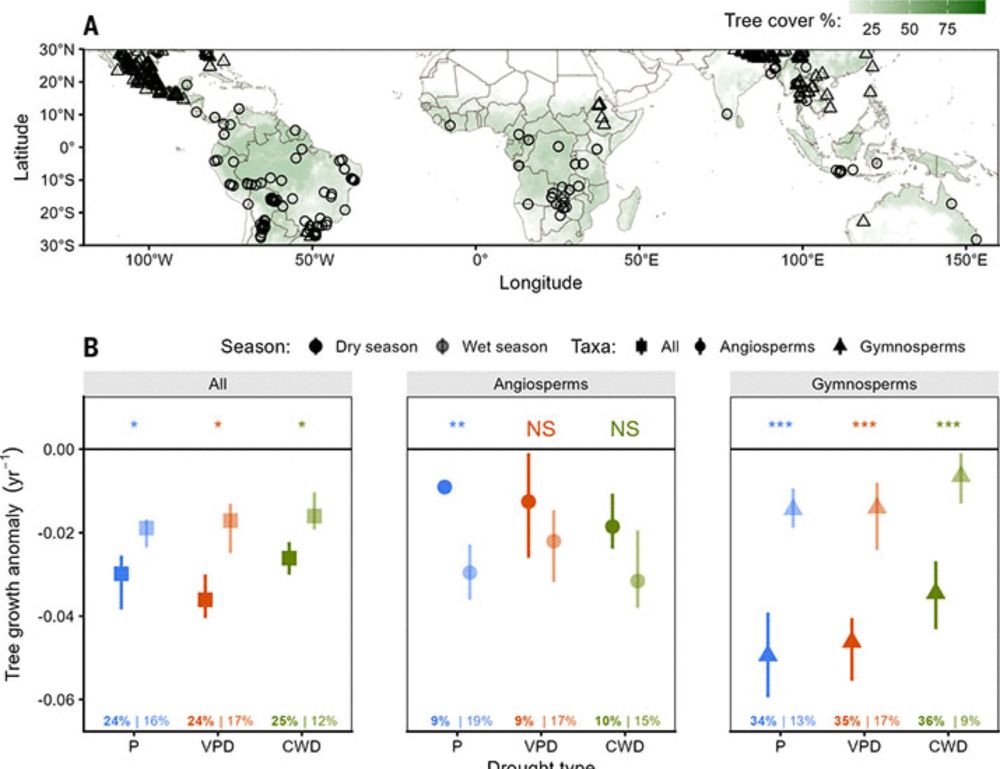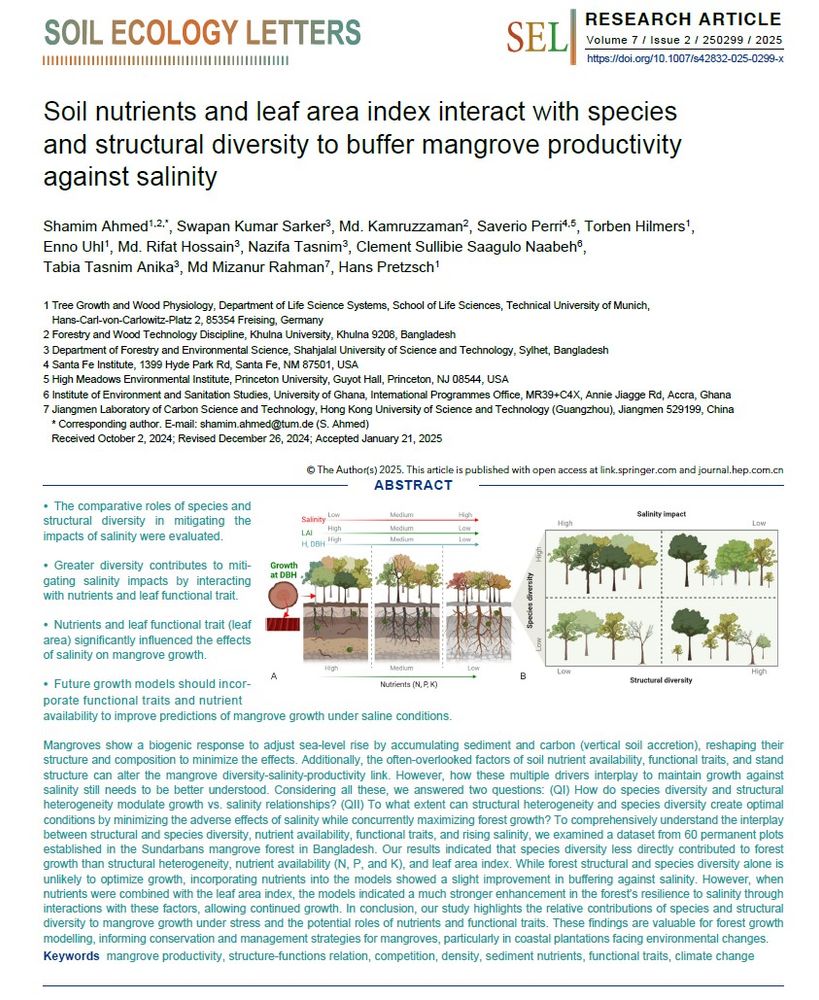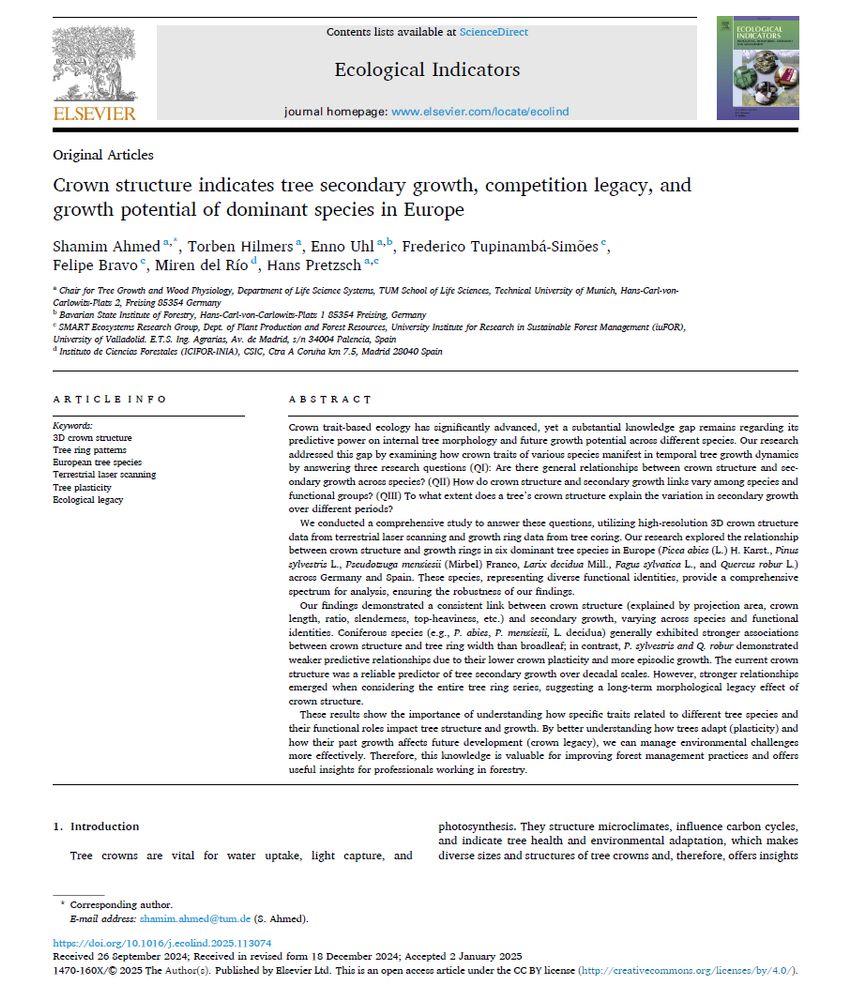Chair for Tree Growth and Wood Physiology
Marie Curie Research fellow
Our pantropical #treering analysis revealed 2.5% growth reduction during #drought years. Yet, growth declined by >10% in 1/4 of 500 study sites, and in hotter & drier regions.
doi.org/10.1126/scie...
🌍🍁🌐
(1/4)

Our pantropical #treering analysis revealed 2.5% growth reduction during #drought years. Yet, growth declined by >10% in 1/4 of 500 study sites, and in hotter & drier regions.
doi.org/10.1126/scie...
🌍🍁🌐
(1/4)
"From Suppressed to Dominant: 3D Crown Shapes Explain the 'To Grow or Wait' Growth Behavior in Close-to-Nature Forests." 🌲 🌳
The preprint is available at: lnkd.in/dhddMKSt
"From Suppressed to Dominant: 3D Crown Shapes Explain the 'To Grow or Wait' Growth Behavior in Close-to-Nature Forests." 🌲 🌳
The preprint is available at: lnkd.in/dhddMKSt
Our latest study, "Soil nutrients and leaf area index interact with species and structural diversity to buffer mangrove productivity against salinity," has just been published in Soil Ecology Letters! 📖✨
📌 Read more: 10.1007/s42832-025-0299-x

Our latest study, "Soil nutrients and leaf area index interact with species and structural diversity to buffer mangrove productivity against salinity," has just been published in Soil Ecology Letters! 📖✨
📌 Read more: 10.1007/s42832-025-0299-x
www.sciencedirect.com/science/arti...

www.sciencedirect.com/science/arti...
I’m thrilled to share that my 3rd PhD chapter has been published in Ecological Indicators!
In this work, we explored how various species respond to their growing conditions, focusing on how these responses are reflected in crown shapes and tree ring patterns.🌳✨


I’m thrilled to share that my 3rd PhD chapter has been published in Ecological Indicators!
In this work, we explored how various species respond to their growing conditions, focusing on how these responses are reflected in crown shapes and tree ring patterns.🌳✨


